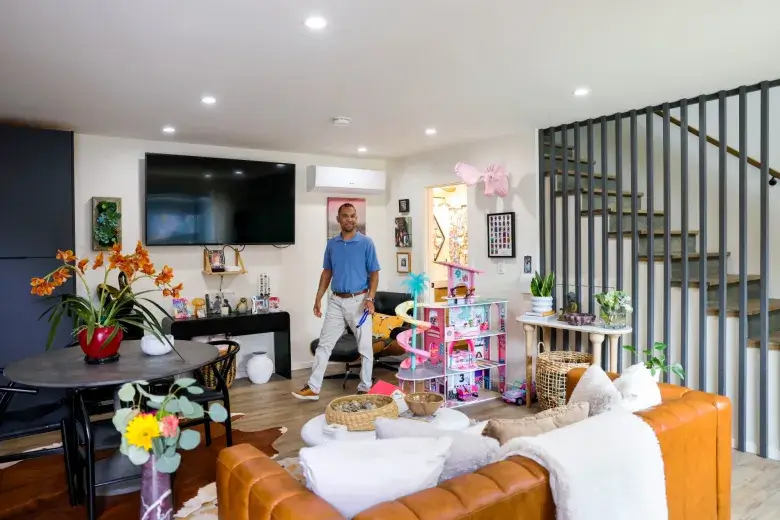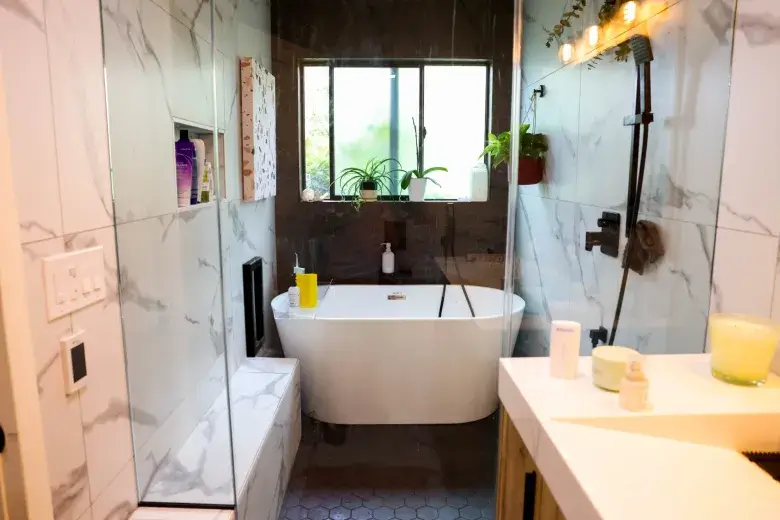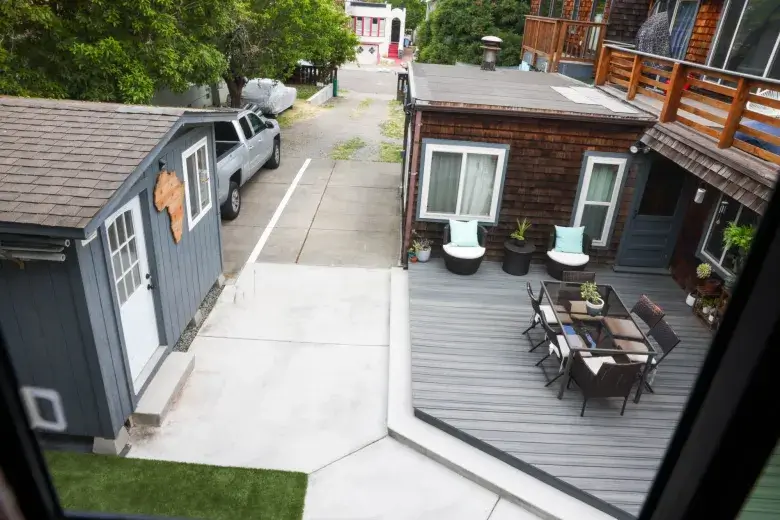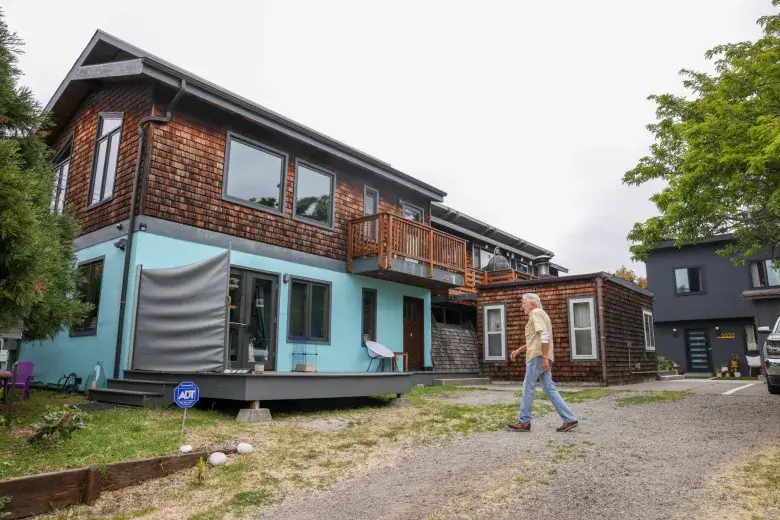The Sun
One of every 5 new homes built in California last year was an ADU

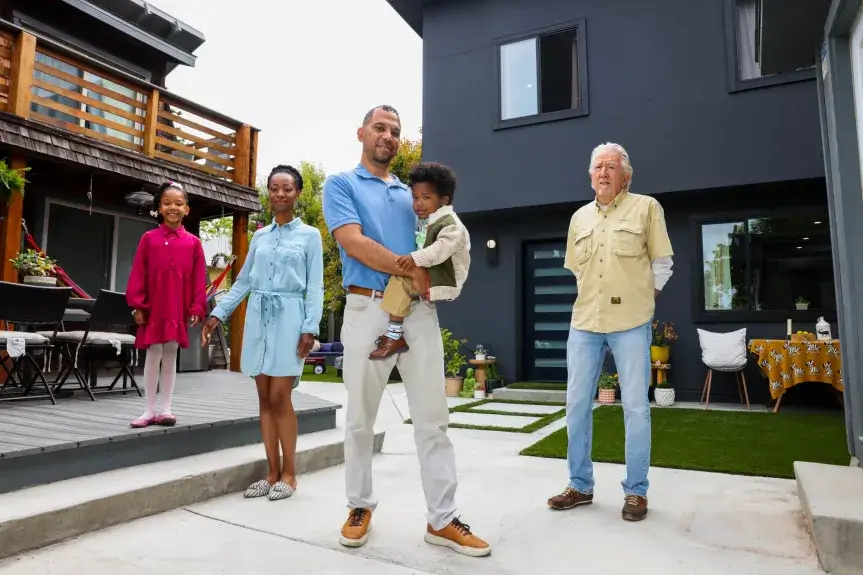
Casey Bradley, center, with his son Shiloh, 2, his wife Daphnée St Pierre, their daughter Cadence, 7, and his father Mike Bradley, 83, stand in their property which features the original home and two ADUs built in the same lot in Berkeley, Calif., on Friday, May 24, 2023. (Ray Chavez/Bay Area News Group)
In 1984, Mike Bradley bought a brown-shingled home on a quiet street in central Berkeley.
Forty years and three generations later, the Bradley family has grown — and so has their home. In 2009, the family built an addition, which Mike got when his son, Michael “Casey” Bradley, moved into the main house with his wife, Daphnée St Pierre, and their two children.
Last year, Mike’s daughter Kelly decided to move from Oakland to Berkeley, seeking to be closer to the rest of the family. After a few weeks of fruitless house-hunting around their neighborhood, Casey had an idea: Why didn’t they construct a house for Kelly on their existing lot?
“We already have this family compound,” Casey said. “Why not build it ourselves?”
Within seven months, Casey — a former planner for the city of Oakland who now works in real estate development — built a 1,000-square-foot, two-story accessory dwelling unit on the back of the lot for about $350,000. That brings the total units on their 8,666-square-foot lot to three (four, if you include the tree house).
In recent years, the state of California has seen an explosion in ADUs, also known as mother-in-law units or backyard cottages. In 2023, one out of every five homes built in the state was an ADU, according to recently released state data. Only three years ago, they represented just one in every 10 new units.
“There’s a generation that has a lot of wealth right now that can build these properties in their backyard and ease the pain of another generation,” said David Gunderman, an Oakland-based real estate agent who helps advise homeowners about building ADUs. “I do think, if anything, we’re on the front end of this wave.”
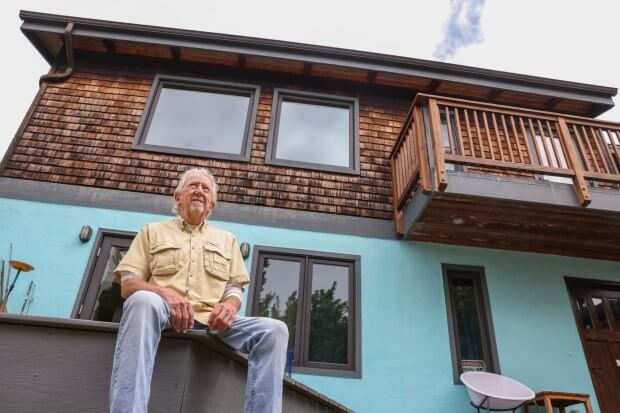
To address its decades-long housing shortage, housing advocates say California needs to build all types of housing — more single-family homes, more tall apartment buildings, more affordable houses, more everything. But supply is constrained by the lack of open land close to existing infrastructure and jobs, as well as strict local zoning laws that limit what can be built in infill areas.
“Our biggest challenge in California is that so much of our zoning is for single-family homes, which makes it next to impossible to build any new housing,” Ting said in an interview. “This is the one housing product that you can actually build in these single-family neighborhoods.”
Oakland-based architect Matthew Baran can remember designing his first backyard cottage in 2010.
“There were a lot of people at the time that asked, ‘Why would you want a house in your backyard?’” he said. “These days, social norms like the idea of owning a single-family home with a big yard are not a given. We’re seeing a shift toward smaller, more efficient living.”
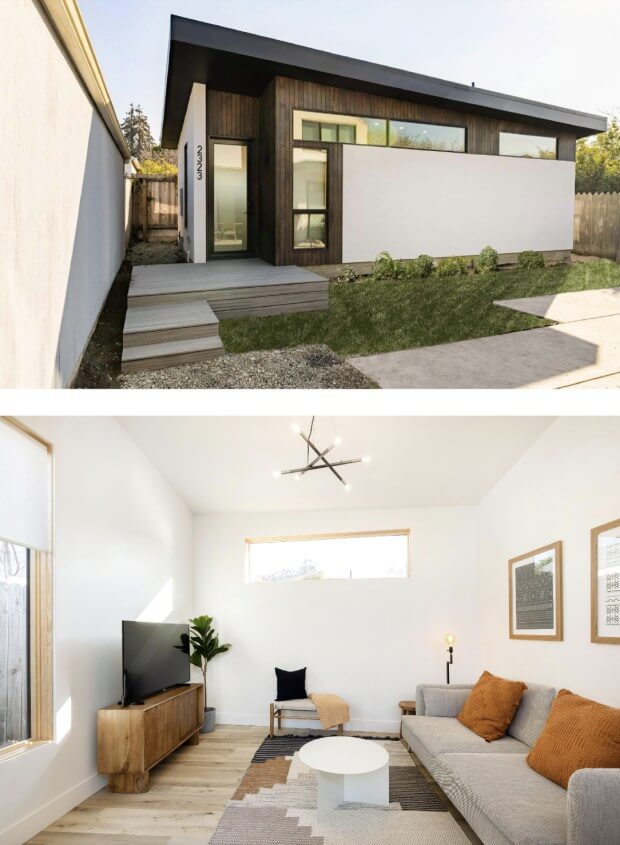
Developers are also fueling some of the growth. In Antioch, BrightSky Residential leveraged the new legislation to build a 71-home subdivision with an ADU on each lot for a total of 141 units — effectively doubling the density without having to change the property’s zoning.
New companies have sprouted up that seek to take advantage of the demand for ADUs. Abodu, based in Redwood City, offers pre-manufactured ADUs that start at $228,800 for a 340-square-foot studio, promising savings in engineering costs and shortening the construction timeline.
Custom-built ADUs, meanwhile, typically range from $500 to $600 per square foot, Baran said — meaning that a 1,000-square-foot ADU could cost upward of $500,000. And that’s without the hookup costs for water and electricity, which can also add around $15,000 to the total cost.
With its potential for rental income and the extra square footage, an ADU may boost the resale value of a home — but not always, Gunderman said. An analysis of sales data in Alameda County by his firm found that homes with ADUs sold for $325,000 more than those without them on similarly-sized lots. But houses with an ADU sold for $720 per square foot — $50 per square foot less than houses without an ADU.
“Your lot size is diminished because you have this intimate neighbor,” Gunderman said.
Starting in July, homeowners will be able to spin off their ADUs separately for sale as condos. For homeowners who are willing to sacrifice some privacy and yard space, the ADUs could offer a more affordable option than existing single-family properties on the market.
Still, not all the new ADUs built around California are actually helping to ease the housing shortage.
Hosting visiting relatives or generating income via Airbnb are all reasons property owners might build an ADU. Baran also has clients building a home addition who classify the project as an ADU to benefit from the streamlined permit process. (The home additions still have to include certain requirements — like a kitchen and bathroom — to access the shortened permitting timeline.)
For his part, Ting is proud to see that his legislation has been met with such enthusiastic demand, but he says that ADUs alone won’t solve California’s housing shortage.
“It’s concerning that we haven’t seen an uptick in other housing types,” he said. “ADUs are just a piece of our housing — but there is so much more housing that we need to get built.”
